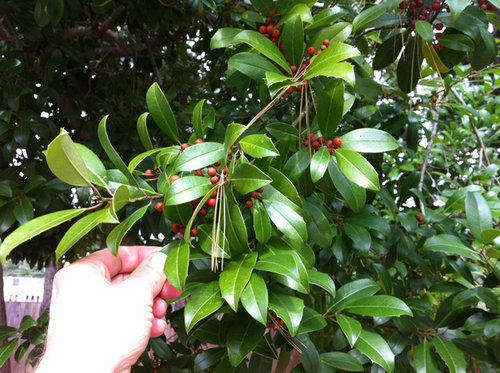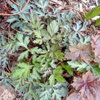Would love ideas on what kind of holly this is.
Dave in NoVA • N. Virginia • zone 7A
10 years ago
Related Stories

LANDSCAPE DESIGNWhat Kind of Gardener Are You? Find Your Archetype
Pick from our descriptions to create a garden that matches your personality and tells your story
Full Story
FEEL-GOOD HOME10 Kinds of Flowers and Foliage for Modern Spaces
Match the plant to the feeling you want to evoke, be it fun, rustic, tropical or romantic
Full Story
DECORATING GUIDESBook Tour: Decorate by Holly Becker and Joanna Copestick
1,000 Inspiring and Practical Design Ideas for Every Room in Your Home
Full Story
BATHROOM DESIGN8 Fabulous Faucets for All Kinds of Bathrooms
Find a new idea for your bathroom sink in 8 very different faucet designs, from waterfall to high-tech digital
Full Story
GARDENING AND LANDSCAPINGOne-of-a-Kind Ways With Planters
Bright colors, unusual shapes, unexpected uses ... these unique ideas for container plantings with personality may just grow on you
Full Story
ACCESSORIESCollective Wisdom: Display Ideas for Collections of All Kinds
Show your interests without exposing clutter by going for artful arrangements with a unified feel
Full Story
KITCHEN DESIGNKitchen Recipes: Secret Ingredients of 5 One-of-a-Kind Cooking Spaces
Learn what went into these cooks’ kitchens — and what comes out of them
Full Story
LIFEThe Polite House: How Can I Kindly Get Party Guests to Use Coasters?
Here’s how to handle the age-old entertaining conundrum to protect your furniture — and friendships
Full Story
KITCHEN DESIGNToday’s Coffee Stations Have All Kinds of Perks
Some of these features are so over the top that they will give you a jolt
Full Story
PETSWorld of Design: Pampered Pets and Their 10 One-of-a-Kind Homes
Fall in love with these critters and their clever living spaces, from a cat playground in France to a chicken house in the U.S.
Full StorySponsored
Columbus Area's Luxury Design Build Firm | 17x Best of Houzz Winner!
More Discussions












Iris GW
Dave in NoVA • N. Virginia • zone 7AOriginal Author
Related Professionals
Garden City Landscape Architects & Landscape Designers · Glassmanor Landscape Architects & Landscape Designers · Redondo Beach Landscape Architects & Landscape Designers · Saint Matthews Landscape Architects & Landscape Designers · Salem Landscape Architects & Landscape Designers · Forest City Landscape Architects & Landscape Designers · Allentown Landscape Contractors · Broomfield Landscape Contractors · Centereach Landscape Contractors · Milford Mill Landscape Contractors · Mission Viejo Landscape Contractors · Quincy Landscape Contractors · Smyrna Landscape Contractors · Wallingford Landscape Contractors · Northlake Landscape Contractorsbluema
Dave in NoVA • N. Virginia • zone 7AOriginal Author
bluema
Dave in NoVA • N. Virginia • zone 7AOriginal Author
bluema
Dave in NoVA • N. Virginia • zone 7AOriginal Author
bluema
Dave in NoVA • N. Virginia • zone 7AOriginal Author
bluema
Dave in NoVA • N. Virginia • zone 7AOriginal Author
bluema
Dave in NoVA • N. Virginia • zone 7AOriginal Author
bluema